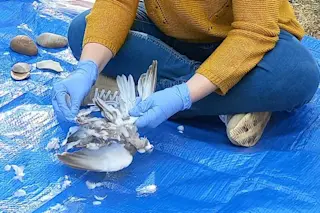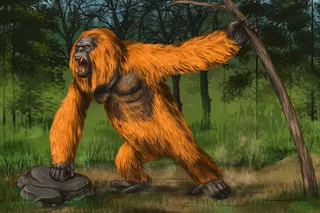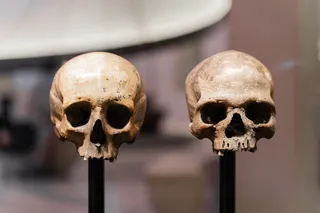To understand more about Neanderthal small-game cooking techniques, a group of scientists went to the birds.
They recreated how early humans butchered, prepared, and roasted pigeons, based on archeological evidence dating back 90,000 years from sites in Portugal. The chef-scientists reported their findings in in Frontiers in Environmental Archaeology.
“Studying a variety of small prey can give us a better understanding of the diverse diet of Neanderthals and their adaptability to different environments and food sources,” says Mariana Nabais of the Institut Català de Paleoecologia Humana i Evolució Social in Spain, and lead author of the article.
Did Neanderthals Make Burn and Cut Marks?
The inspiration for the menu arose from the Middle Paleolithic sites of Figueira Brava and Oliveira in Portugal. Archeologists had found bird bones with burn stains and cut marks there, but wanted to rule out other causes before saying definitively that Neanderthals were responsible.
“It's often challenging to determine whether these marks were made by human activities or by natural processes or other animals,” says Nabais.
They discerned Neanderthal cooking methods by examining the archeological evidence closely and turning to studies of ancient human culture. For example, there is a body of work that examines how Neanderthals likely prepared larger game. Much evidence points to their use of sharp flint flakes as knives.
Based on those studies, they manually de-feathered the birds, used flint flakes to butcher two birds before roasting them over coals, and three after. They found butchering much easier after the birds were cooked.
“This allowed us to compare the experimental results with the archaeological evidence from sites like Figueira Brava and Oliveira, helping us to identify specific cut marks, burns, and fractures that result from human activity,” says Nabais.
Read More: The Fascinating World of Neanderthal Diet, Language and Other Behaviors
Neanderthal Skill and Practice
One of their biggest takeaways? “Using a flint flake for butchering is hard," Nabais says.
She found the flakes sharper and trickier to handle than she had anticipated — which points to a level of practice and skill they Neanderthals must have achieved.
Those sorts of insights are why it’s important to replicate a variety of early human cooking techniques.
"The hunting and processing of fast moving prey, like birds, are generally a good indicator of cognitive capacities, demonstrating the Neanderthal ability to pre-plan their capture and the use of traps. These are traits often associated with the academic world denominated as ‘Complex Behaviour’,” says Nabais.
The scientists used five wild birds that had died of natural causes from the Wildlife Ecology, Rehabilitation and Surveillance Centre (CERVAS) in Gouveia, Portugal. They chose two carrion crows, two collared doves, and a wood pigeon.
The scientist-chefs did not sample their Paleolithic fare, due to the possibility that the birds may have been disease carriers.
“However, I must admit, the pigeon was pretty tempting!” says Nabais.
Read More: Ancient Predators: A Guide to the Neanderthal Hunt
Article Sources
Our writers at Discovermagazine.com use peer-reviewed studies and high-quality sources for our articles, and our editors review for scientific accuracy and editorial standards. Review the sources used below for this article:
Frontiers in Environmental Archaeology. Experimental replication of early human behaviour in bird preparation: a pilot-study focusing on bone surface modification and breakage patterns














